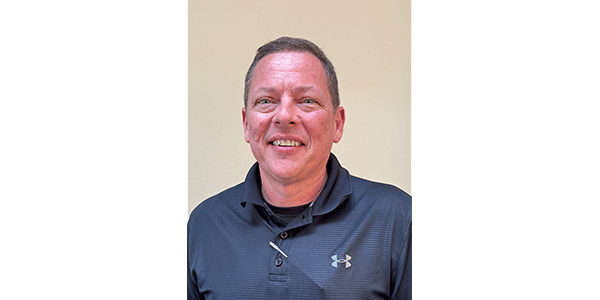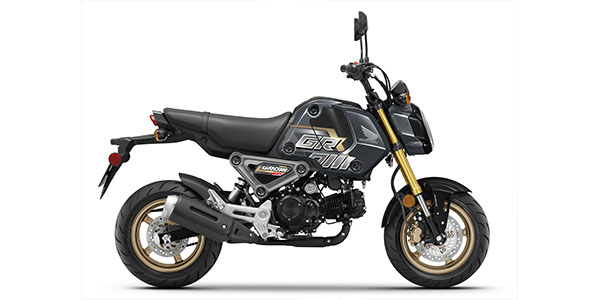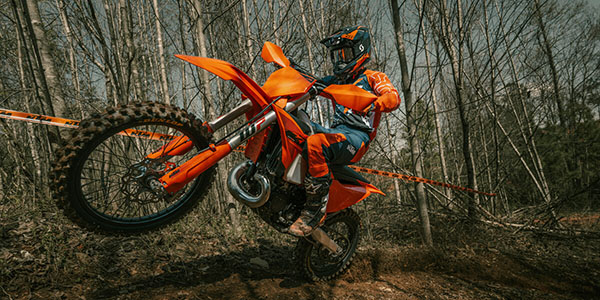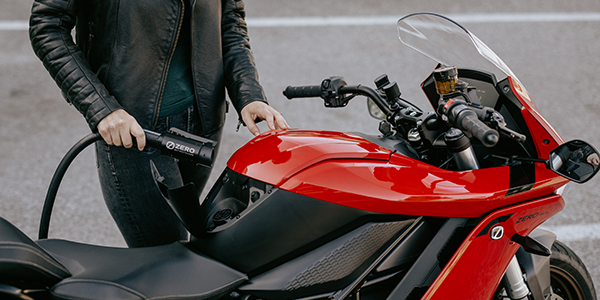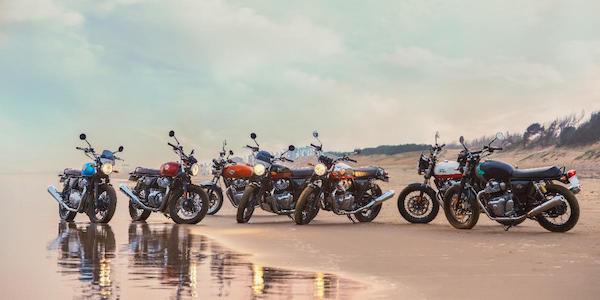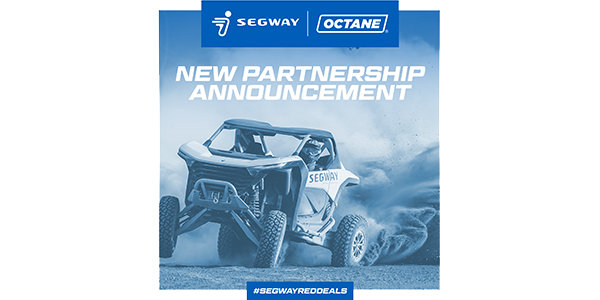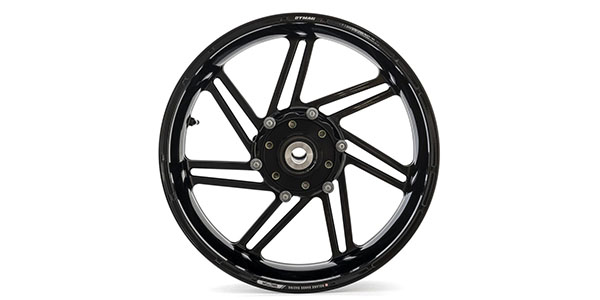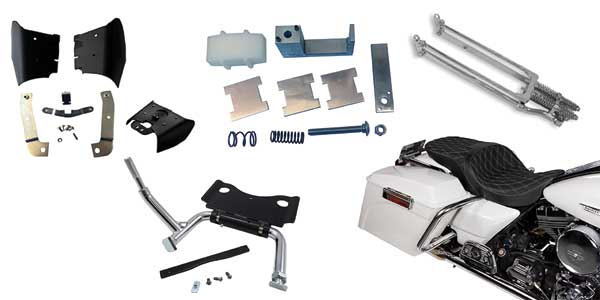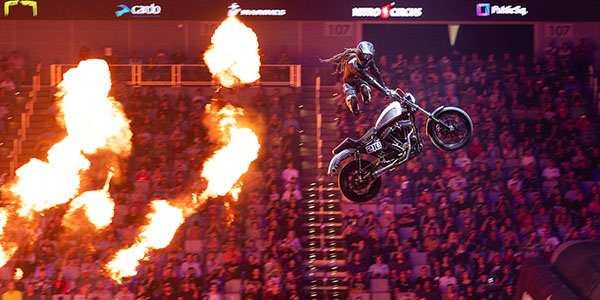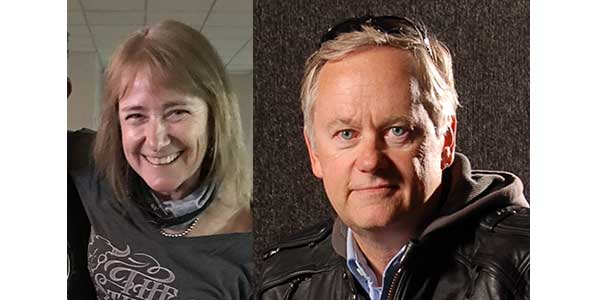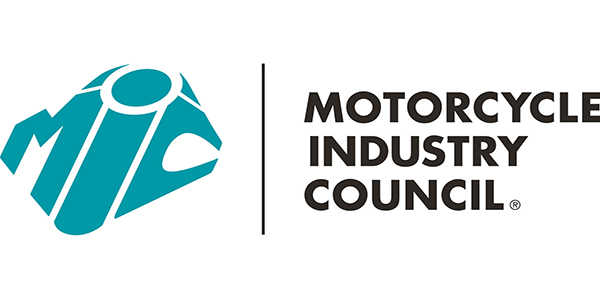NASCAR lives and dies by close racing. Keeping the pack on track tight was the primary goal of the autocratic founder, Bill France Sr., and it carried on to his equally iron-fisted descendents. Team advantages are negated with rules changes. New technology is adopted slowly and carefully. The result is a race series that everyone loves to criticize for stone-age machinery, dictatorial leadership and racing that favors tactical veteran drivers rather than instinct-reflex speed savants.
Of course, it’s also the most popular motorsport in America, with an estimated 75 million fans.
The parity that defines NASCAR is coming to a motorcycle race near you. The Daytona Motorsports Group (DMG) — which is part-owned by Bill Sr.’s son, Jim France — recently purchased the rights to sanction AMA professional racing (except for Supercross and Arenacross). The series will still be called AMA Pro Racing, but DMG will become the new sanctioning body and make all the decisions concerning how the series is managed and promoted.
Jim France brings the financial horsepower to DMG — he owns 12 race tracks and Forbes magazine consistently lists him as one of the world’s richest men (#242 in 2006), but France lets his partner, respected race promoter Roger Edmondson, do most of the talking.
Edmondson recently outlined the DMG vision for AMA racing. In the proposed changes, the France family commitment to competitive racing carries through loud and clear.
The most dramatic change comes in the premier class, AMA Superbike. As it stands today, the 1,000cc race bikes produce as much horsepower as the factory engineers can develop within class rules. Suzuki dominates the class, with riders Matt Mladin and Ben Spies winning the bulk of the races since 2000.
DMG is proposing moving the lighter bikes to a secondary class and creating a new premier class, Daytona Superbike, in which horsepower-limited 600cc bikes will compete. Rear-wheel horsepower will be limited by DMG, using a formula that factors in the combined weight of the rider and motorcycle.
The desired outcome is having a larger selection of motorcycle models racing competitively and making the talent of the rider the factor that determines who ends up on the podium. According to DMG, 14 different models of motorcycles qualify for the class.
“It’s essential to us that everybody have an opportunity,” Edmondson said. “To me, that means they have to have equal, affordable equipment. And it shouldn’t matter if you have big bones or small bones — your talent should be the primary deal. And it should not only be available but be affordable because if it’s not affordable it’s not available.”
Equal equipment alone may or may not deliver competitive racing — the best and brightest teams and riders will still shine. But it’s doubtful that they can dominate in the way that Suzuki has in recent history, and other brands have done in the past with that magical combination of a brilliant bike and exceptional riders.
And if DMG takes the NASCAR approach and carefully monitors and changes the rules, they could make sure that anyone who starts winning too often will have their competitive advantage minimized. Whether or not that will be the approach is unknown, but the NASCAR-like commitment to competitive racing is clear in Edmondson’s message.
“What we need is a program where a half of a dozen guys come out of the last turn with a shot to win,” Edmondson said. “Even if you are the last man in the pack, your sponsor is going to be thrilled because you had real hope and a real opportunity and, by the way, you got some real air time on TV.”
For the promoters who make their living with the AMA racing product, the change to DMG management of the series is welcome. Steve Page, the president and general manger at Infineon Raceway, was upbeat and positive about the new group.
“Generally, I think anything that promotes real competition in the racing will be positive for the fans,” Page said. “When you come to the track and you know that one of two bikes is going to win the race, you have to find other things … to entice people to come out.”
Infineon Raceway hosts NASCAR, NHRA, IndyCar and the Grand Am series. While Page has been able to increase attendance at Infineon’s AMA roadracing event by packing the race weekend with motocross racing, stunt riding shows and rock bands, he said those increases came in spite of the AMA’s efforts.
“Of all the professional racing that we run here, AMA Superbikes … has been the worst run, worst-promoted form of racing,” Page said. “It has been very challenging as a promoter when you don’t get the support at the series level.”
He has worked with Roger Edmondson in the past on the promotion of the new Grand American Road Racing Series and has confidence that his professionalism and experience will improve matters in the coming years. “I have enough experience with Roger to know that’s going to change and that’s going to be a huge benefit,” Page said.
Close racing and Roger’s professionalism are both widely acknowledged as positive additions to AMA racing. The change to horsepower-limited motorcycles has generated much more controversial reactions. The major critique is the bikes will no longer represent the pinnacle of performance. Fans who come to see these exotic bikes will be disappointed and may stay home, and there is a legitimate concern that the top riders will gravitate toward series with higher-performance machines (World Superbike being the prime example).
AMA Superbike’s Matt Mladin (who has won five of the last seven Superbike Championships) made his position on the new rules crystal clear at the press conference after the May 17 race at Infineon Raceway, where he said fans should voice their dissatisfaction with DMG’s proposal for a new Daytona Superbike class so they don’t see a series populated by “piece of crap motorcycles and second-rate riders.”
When asked about his future in AMA roadracing, Mladin flatly responded, “I won’t be riding Daytona Superbike next year.
With riders like Mladin out of the series and less exotic motorcycles on the grid, will anyone come watch? Maybe not. Dean Adams, the journalist who owns and operates SuperbikePlanet.com, pointed out that the results could be dire.
“The thing no one talks about is the doomsday aspect of all this,” Adams said. “A race series can go away. Can-Am is gone. F-USA is gone. CART filed for bankruptcy. I hope whatever the plan is, that it’s a good one, and it allows the series to continue.”
Edmondson believes safety is an important part of keeping the series alive. “You have a finite facility that is being invaded every year by motorcycles that are not finite,” Edmondson said. “They continue to get faster and faster and faster. This means that we have outgrown the race tracks. We are now flying jet planes in a gymnasium. And there is no fix for that because the profit margin of the events does not justify the necessary improvements. Unlike the rest of the word — literally the rest of the world — we do not get government subsidies.
“So we’ve got to recognize that we have to decide how fast we want go and then put a cap on that. Then find out who’s the best rider,” he said. “We need to return it to where we don’t just watch the motorcycles, we watch the athletes.”
He also argues that AMA roadracing needs to bring in outside sponsorship in order to thrive, and closer racing is required in order to do that. He has a point. Who is going to back a rider that never gets any airtime?
vAnd Edmondson has shown that he can pull in those kind of people to back his efforts. He created the Moto ST class in the Grand American Road Racing Association, and was able to land Suntrust as the series sponsor. He’ll have significantly improved media exposure and attendance to market with the AMA series.
So can NASCAR-like racing translate to two wheels? Probably, but it won’t come without some growing pains. Many of the series’ long-time fans feel much as Mladin does, and believe that the new rules changes brought in by DMG could destroy AMA roadracing.
Despite the criticism, Edmondson has not wavered in his stance that more parity with limited race machinery is the future of Daytona Superbike and, on a larger scale, AMA roadracing.
“We have to decide whether we are going to continue to be a members activity for a big motorcycle club — which is what this has been for years — or whether we will really be professional motorsports,” he said. “If we’re going to run it, it’s going to be professional motorsports.”
DMG is playing with a stacked deck. Edmondson has the right combination of intimate knowledge of both race series promotion and motorcycle racing, and the France family does not take on a new venture half-heartedly. These guys will promote and manage the sport more effectively than the AMA.
The NASCARization of AMA roadracing will alienate some hard-core fans, but the faithful won’t stop buying motorcycles. If DMG succeeds, the sport will draw more mainstream crowds with exciting racing done on machinery available in the showroom. Give Edmondson and his plan some time — he might just sell some bikes for you.


